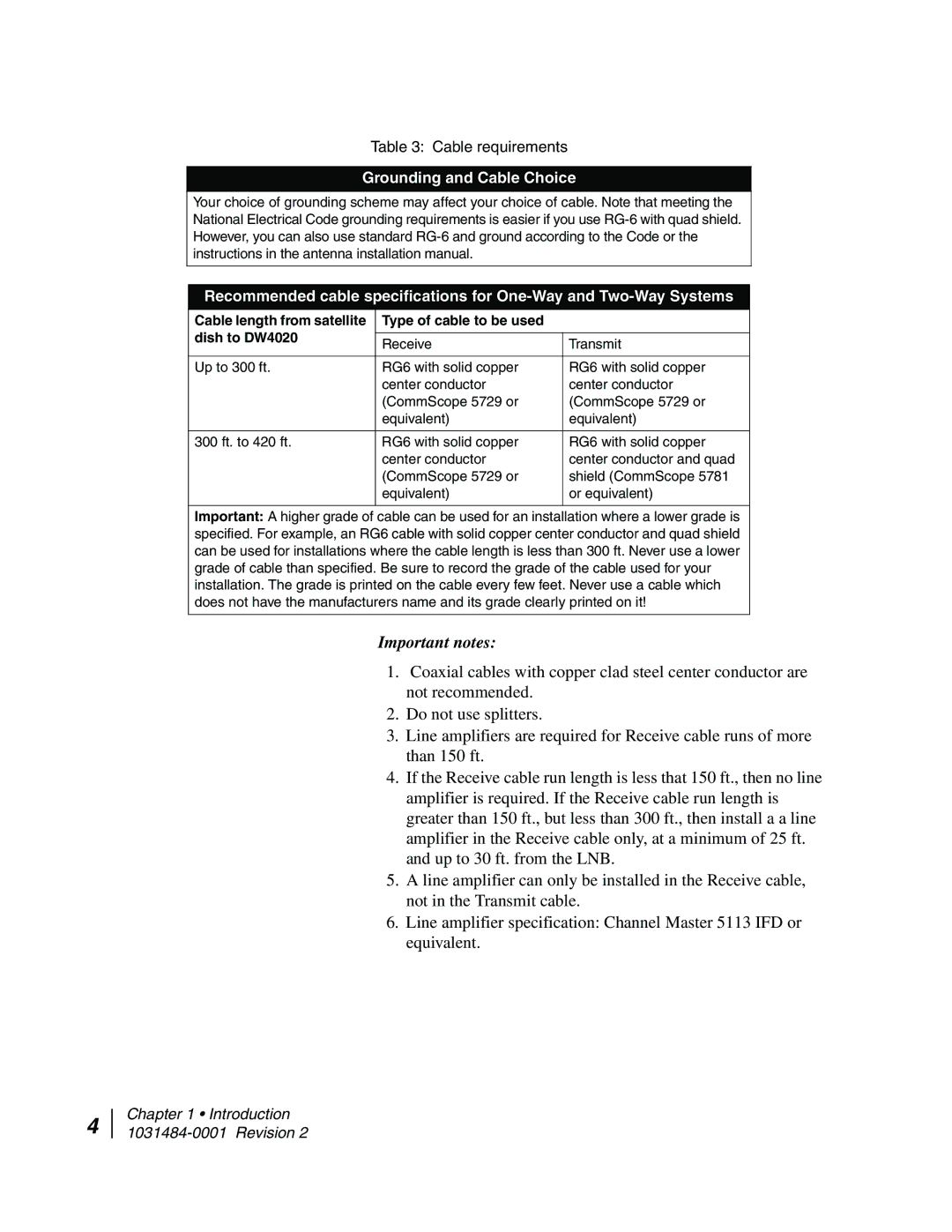
Table 3: Cable requirements
Grounding and Cable Choice
Your choice of grounding scheme may affect your choice of cable. Note that meeting the National Electrical Code grounding requirements is easier if you use
Recommended cable specifications for
Cable length from satellite | Type of cable to be used |
| |
dish to DW4020 |
|
| |
Receive | Transmit | ||
| |||
|
|
| |
Up to 300 ft. | RG6 with solid copper | RG6 with solid copper | |
| center conductor | center conductor | |
| (CommScope 5729 or | (CommScope 5729 or | |
| equivalent) | equivalent) | |
|
|
| |
300 ft. to 420 ft. | RG6 with solid copper | RG6 with solid copper | |
| center conductor | center conductor and quad | |
| (CommScope 5729 or | shield (CommScope 5781 | |
| equivalent) | or equivalent) | |
|
|
|
Important: A higher grade of cable can be used for an installation where a lower grade is specified. For example, an RG6 cable with solid copper center conductor and quad shield can be used for installations where the cable length is less than 300 ft. Never use a lower grade of cable than specified. Be sure to record the grade of the cable used for your installation. The grade is printed on the cable every few feet. Never use a cable which does not have the manufacturers name and its grade clearly printed on it!
Important notes:
1.Coaxial cables with copper clad steel center conductor are not recommended.
2.Do not use splitters.
3.Line amplifiers are required for Receive cable runs of more than 150 ft.
4.If the Receive cable run length is less that 150 ft., then no line amplifier is required. If the Receive cable run length is greater than 150 ft., but less than 300 ft., then install a a line amplifier in the Receive cable only, at a minimum of 25 ft. and up to 30 ft. from the LNB.
5.A line amplifier can only be installed in the Receive cable, not in the Transmit cable.
6.Line amplifier specification: Channel Master 5113 IFD or equivalent.
4
Chapter 1 • Introduction
